

Resurrection (1918) Famous Players-Lasky Corp. Distributor: Famous Players-Lasky Corp; Paramount Pictures. Presenter: Adolph Zukor. Director: Edward Jose. Scenario: Charles E. Whittaker. Camera, Ned Van Buren. Cast: Pauline Frederick, Robert Elliott, John Sainpolis, Jere Austin. 5 reels. This film appears to be LOST
Fictionalization which appeared in Motion Picture Magazine (issue unknown, they read across)
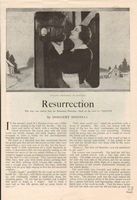 |
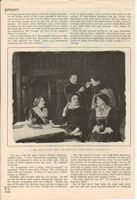 |
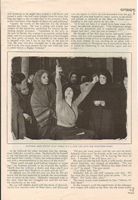 |
 |
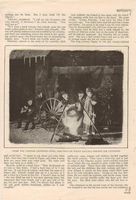 |
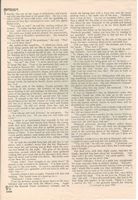 |
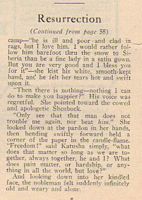 |
Click on thumbnails for larger views
| Katusha | Pauline Frederick |
| Prince Nekludov | Robert Elliott |
| Simonson | John Sainpolis |
| Shenbok | Jere Austin |
On the eve of her departure under contract to another film concern, Paramount is rereleasing Pauline Frederick's feature, "Resurrection." It is from the famous novel of the same name by Leo Tolstoy; scenario by Charles E. Whittaker. One cannot help but make comparisons between the present Paramount production and the one in which Blanche Walsh was starred, the latter being one of the first big film features ever produced. Miss Walsh made the most sensational hit of her career on the legitimate stage in the spoken play. Pauline Frederick has a decided advantages through the use of modern screen accessories and natural beauty. Despite these handicaps Blanche Walsh was not only a greater actress, but was artist enough to subordinate whatever personal charms she might have had to a proper characterization of the role of Katusha, the unfortunate Russian peasant girl who fell a victim to the wiles of Prince Nekludov. The scenario prepared by Mr. Whittaker possesses none of the spirituality with which Count Tolstoy invested his immortal tale. The scenarioist has set down a series of scenes visualizing only the high spots of the Tolstoy classic in all their sordid vividness without attempting to show that Katusha gave herself to the Prince in love and not through mere physical weakness. The crux of the narrative is thereby utterly lost. Again there is no attempt at comedy relief such as, for instance, in the Walsh version, the scene in the jury room depicting the various types of jurist who pass upon her guilt. There is the usual careful Paramount casting and adherence to atmospheric details, albeit a rather poor makeshift for Russian architecture and the presence of an American stove in a Russian interior. Eduard Jose was the director. When one recalls the magnificent characterization contributed to the original production by Blanche Walsh and Jos. Haworth in the principal roles, it is not easy to be wholly satisfied with the present Paramount screening of "Resurrection."
Pauline Frederick's "Resurrection" is Released May 6."
[Omitted: Picture of Frederick talking to a bearded man and holding something, surrounded by Russian peasants. Caption: Scene from "Resurrection" (Paramount)
A play lending itself to exploitation on a grand scale is "Resurrection," the paramount release of May 6, starring Pauline Frederick in the role of Katusha, the heroine of the Tolstoy story, whose tempestuous life has been one of the most widely read stories in the world of fiction. The combination of author, play and star is a formidable one, which, added to the spectacular production, should prove effective in the box office.
Tolstoy is admittedly one of the most forceful writers the world has yet seen. The incidents of pathos and sensationalism crowded into the life of Katusha make this role one of the most exacting and emotional. Blanche Walsh created this role on the American speaking stage.
Charles E. Whittaker adapted "Resurrection" to the screen. His familiarity with Russia was of great assistance in visualizing this Tolstoy play.
Miss Frederick's qualifications to portray the difficult role of Katusha has been amply demonstrated in the past, and she has appeared to advantage in many Paramount pictures in emotional characters, the more recent of which were "Madame Jealousy" and "La Tosca."
As the play in a large measure deals with the nobility of Russia, massive settings were required. One of the largest interiors is the big courtroom, where the unfortunate victims of autocracy are sentenced to Siberia, and a big ensemble is the seemingly endless line of prisoners on the snow covered road to the far off exile. Chief among the supporting cast are Robert Elliott, John Sainpolis and Jere Austin.
"RESURRECTION."
Adolph Zukor Presents Pauline Frederick in Count Leo Tolstoy's Great Drama, Scenarioized by Charles E. Whittaker, Paramount Release for May 6.
| Katusha | Pauline Frederick |
| Prince Nekludov | Robert Elliott |
| Simonson | John Sainpolis |
| Shenbok | Jere Austin |
The Story: Katusha, a beautiful half Gypsy Russian girl, is betrayed by a prince. In accordance with the custom of the old regime of Russia she becomes a woman of the streets, and through an accident is finally sentenced to imprisonment in Siberia for a crime she did not commit. On the jury which convicts Katusha is the prince who is responsible for her degradation. He pleads with the Czar in her behalf, and obtains her pardon, and he presents this to her guard just in time to save her from the advances of a brutal officer. The prince offers to marry Katusha, but she has learned to love a simple peasant, and, preferring him to the prince, she gladly enters upon her banishment with the man she loves.
Feature: Pauline Frederick as Katusha and John Sainpolis as Simonson.
Program and Advertising Phrases: The story of a Tragic Life Finally Glorified by Enduring Love and Devotion.
Darkest Russia Reflected in a Tragedy of Siberian Exile.
A Soul Resurrected from Agony of Despair by Love Sublime.
The Double Standard of Morals Scathingly Arraigned.
One of the Greatest Melodramas of All Time.
Enduring Stage Triumph Translated to Permanent Screen Use.
Stunt Suggestions: Stunts will be hard to devise, and might be unsuited to the tragic note of the drama. Play made famous by Blanch Walsh, beside the great numbers who read Tolstoy gives the screen version an original following that only need to be stirred by proper advertising. An especially good picture to use heavily in newspaper advertising.
Advertising Aids: Two each one, three and six-sheets. One 24-sheet. Lobby displays, Photos 8x10, 11x14, 22x28. Cuts from one to three columns on star and production. Advertising layout mats. Slides. Press book.
"RESURRECTION"
Screen Version of Tolstoy's Powerful Story Has Pauline Frederick As Heroine.
Reviewed by Edward Weitzel.
The moral purpose of Toystoy's [sic] story "Resurrection" is beyond question. In novel and in stage form it has been received as an honest handling of a vital subject. The screen version produced by the Famous Players-Lasky Corporation does not attempt to dodge the issue so masterfully treated by the Russian author. Tolstoy shows in "Resurrection" how a woman pays when she transgresses the moral law and how the partner of her sin goes free. It is not a pleasant story and paints vice in anything but alluring colors.
Katusha, a Russian peasant girl, who is the servant and companion of the two old maid aunts of Prince Nekludov, is betrayed by that nobleman and left to fact the consequences alone. Turned away by the two maiden aunts, Katusha takes refuge in the barn of a peasant, where her child is born. After its death the mother becomes a woman of the streets and is given a "Yellow Ticket," according to the Russian custom. Katusha sinks lower and lower until she is entangled in a murder case. Although innocent, she is convicted and sentenced to Siberia.
One of the jurors is Prince Nekludov. He recognizes the girl. When her lawyer says "If we ask who is responsible for her being here, we must go back to the day when she was ruined by a man who still remains unpunished." Nekludov is overcome by remorse. He follows Katusha to the prison and promises to obtain her freedom and make her his wife. By the time he secures the pardon from the Czar the girl has gone many weary miles on her journey across Siberia. In the meantime, she has met Simonson, a fellow prisoner, who has taught her the way to her moral resurrection. This man defends her against one of the officers of their escort. Knowing that he truly loves her, Katusha refuses the pardon and the protection of Nekludov's name and goes into exile with Simonson, a man who is willing to make any sacrifice for the cause of humanity.
Pauline Frederick is the Katusha of the screen production. She suits the part physically and mentally and acts with admirable dramatic force. Robert Elliott as Prince Nekludov, John Sainpolis as Siminson and Jere Austin as Shenbok are excellent in their several roles. Charles E. Whittaker has retained most of the points of the story and constructed a fairly good scenario. The production has truthful local color, and the winter scenes, with the wretched convicts tolling through the snow, are impressive.
GOOD PICTURES SEEN IN 'RESURRECTION'
Version of Tolstoy's Novel Given at the Strand--Pauline Frederick as Katusha
DETAILS RECEIVE ATTENTION
There are some remarkably good pictures in the screen version of Tolstoy's "Resurrection" presented at the Strand Theatre this week, and the photoplay offers a good story. Also Pauline Frederick as Katusha acts with skill and her support cannot be complained of. The production seems to have been made with some regard for the time and place of the scenes, and commendable attention was paid to details in the staging of the action. But the play at the Strand is not Tolstoy's "Resurrection." It is simply a moving picture play in which Tolstoy's story is used. His analysis of human beings, his presentation of altering and developing character, his purposeful exposure of social and political conditions does not reach the screen.
The story of how Katusha, beginning as a simple country girl in the home of two unmarried sisters, became the dupe of Prince Nekludov, and of how, driven out by the sisters, the girl went to spiritual death and was reclaimed later through the instrumentality of the repentant Prince and Simonson, the prophet, is familiar to many. The various episodes in Katusha's life are dramatically set forth, and the scenes of the girl before the court, in prison, and on the way to Siberia are well done, but one unfamiliar with Tolstoy's work would probably wonder at the sudden transformation in Katusha's character without the operation of sufficient discernible influence.
Last revised, December 25, 2008